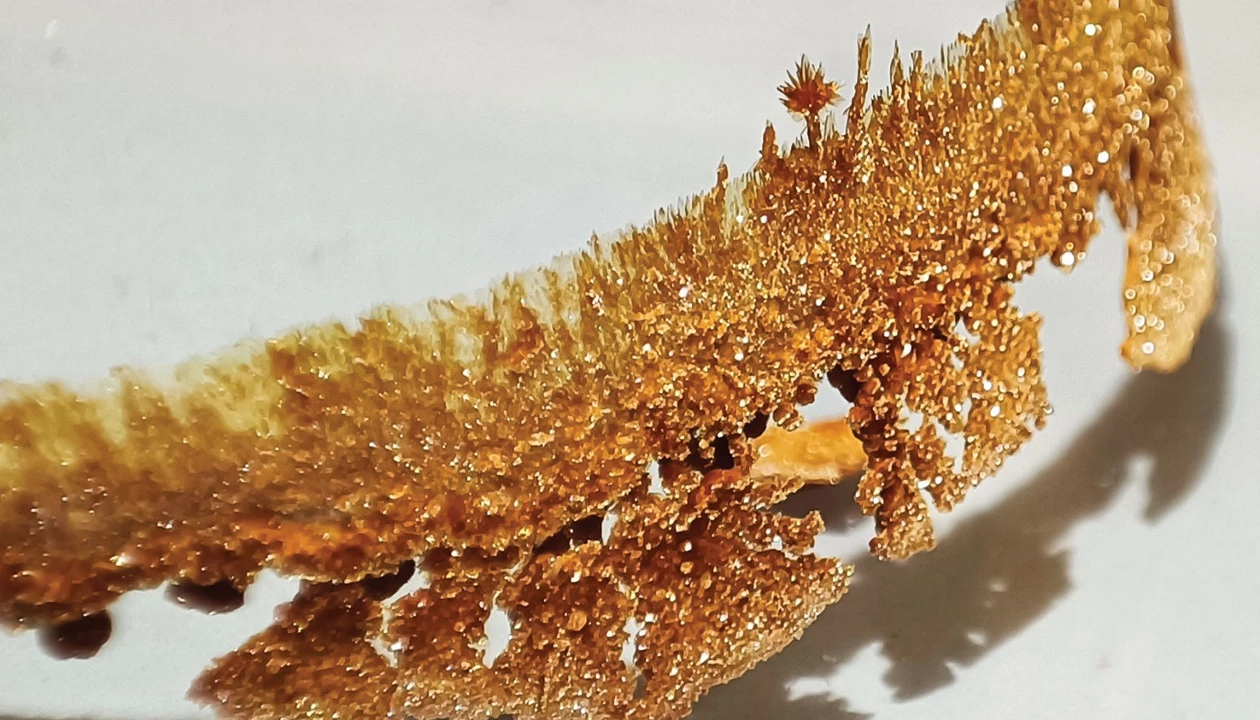1,2,3-Triazole aldehyde is a common stop along many synthetic routes in organometallic chemistry, according to Anna Heleveria, a graduate student at the University of Chemistry and Technology Prague. The compound and its relatives are key building blocks for a useful range of catalysts and biologically active molecules. Rather than plow through to the next step, though, Heleveria stopped to admire the metallic crystals that formed in her flask. “The intricate needle-like structure and sparkling details resemble complex architectural forms, blending science with aesthetics,” she says. “Fundamental chemical processes can be both useful and incredibly beautiful.”
Submitted by Anna Heleveria
Do science. Take pictures. Win money. Enter our photo contest.
See more Chemistry in Pictures.
Craig Bettenhausen Craig Bettenhausen is a business reporter at C&EN. Craig’s coverage of the chemical industry spans a wide range of topics including but not limited to: cleaning and personal care, biobased fuels and chemicals, sustainability, coatings and adhesives, electronic chemicals, and industrial biotechnology. In addition to his reporting for the business group, Craig leads C&EN’s Chemistry in Pictures (cen.chempics.org) and hosts the podcast C&EN Uncovered. Craig has an MA in Chemistry from Johns Hopkins University, where he studied thin-film solar cells and biomimetic synthetic inorganic chemistry, and a BS in Chemistry from Harding University, where he helped develop open-cell near-IR spectrometers. Craig has worked at C&EN since 2011 and is based in Baltimore, Maryland.
Chemical & Engineering News
ISSN 0009-2347
Copyright ©
2025 American Chemical Society


